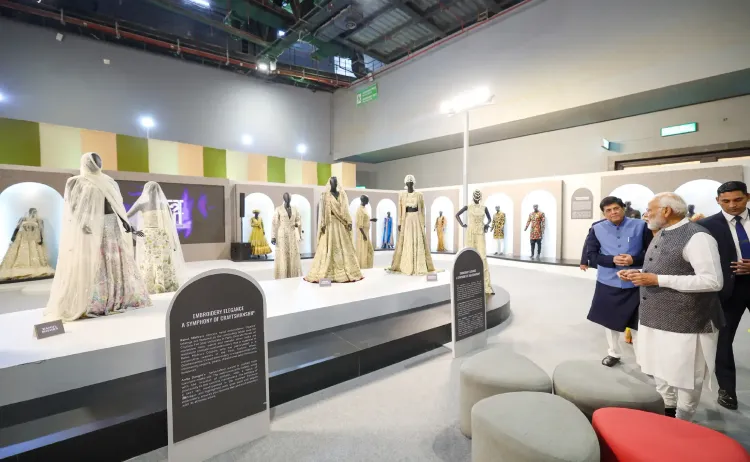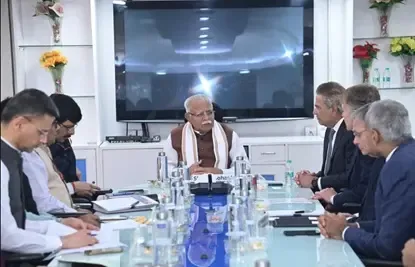Is India’s Textile Export Growth Unstoppable in 111 Countries?

Synopsis
Key Takeaways
- Textile exports grew by 0.1% during April–September 2025.
- Major markets include UAE, Japan, and Germany.
- Collectively, 111 markets contributed $8,489.08 million.
- Key sectors driving growth are RMG and jute.
- GST reforms positively impact artisans and traditional crafts.
New Delhi, Nov 12 (NationPress) India’s international exports of textiles, apparel, and made-ups saw a slight increase of 0.1 percent during the period from April to September 2025, compared to the same timeframe in 2024, according to government data released on Wednesday.
The textile and apparel sector, along with handicraft exports, displayed notable resilience in the initial half of FY 2025-26, standing strong against global challenges and tariff issues in key markets.
Among the significant export destinations for India, several showed remarkable growth, including the UAE (14.5 percent), the UK (1.5 percent), Japan (19.0 percent), Germany (2.9 percent), Spain (9.0 percent), and France (9.2 percent).
Additionally, other markets that recorded substantial growth included Egypt (27 percent), Saudi Arabia (12.5 percent), and Hong Kong (69 percent).
These 111 markets collectively contributed $8,489.08 million during the April–September period of 2025, a significant increase from $7,718.55 million the previous year—indicating a 10 percent growth and an absolute increase of $770.3 million.
Key sectors fueling this growth were ready-made garments (RMG) with a growth rate of 3.42 percent and jute at 5.56 percent.
The ministry emphasized that this performance showcases the sector’s adaptability and competitiveness amid global uncertainties. India’s persistent push into non-traditional markets aligns with the government’s focus on export diversification, value addition, and global market integration under the initiatives of “Make in India” and “Aatmanirbhar Bharat”.
Moreover, recent GST 2.0 rate reductions on numerous handicraft items from 12 percent to 5 percent have significantly benefitted the country’s artisans, boosting demand for their products, leading to increased earnings, and allowing them to compete effectively with factory-made goods.
This tax relief has positively impacted artisans involved in creating wood-carved products, terracotta jute handbags, textile items, and leather goods. By alleviating the tax burden, these reforms aspire to strengthen markets for traditional handlooms and crafts.









